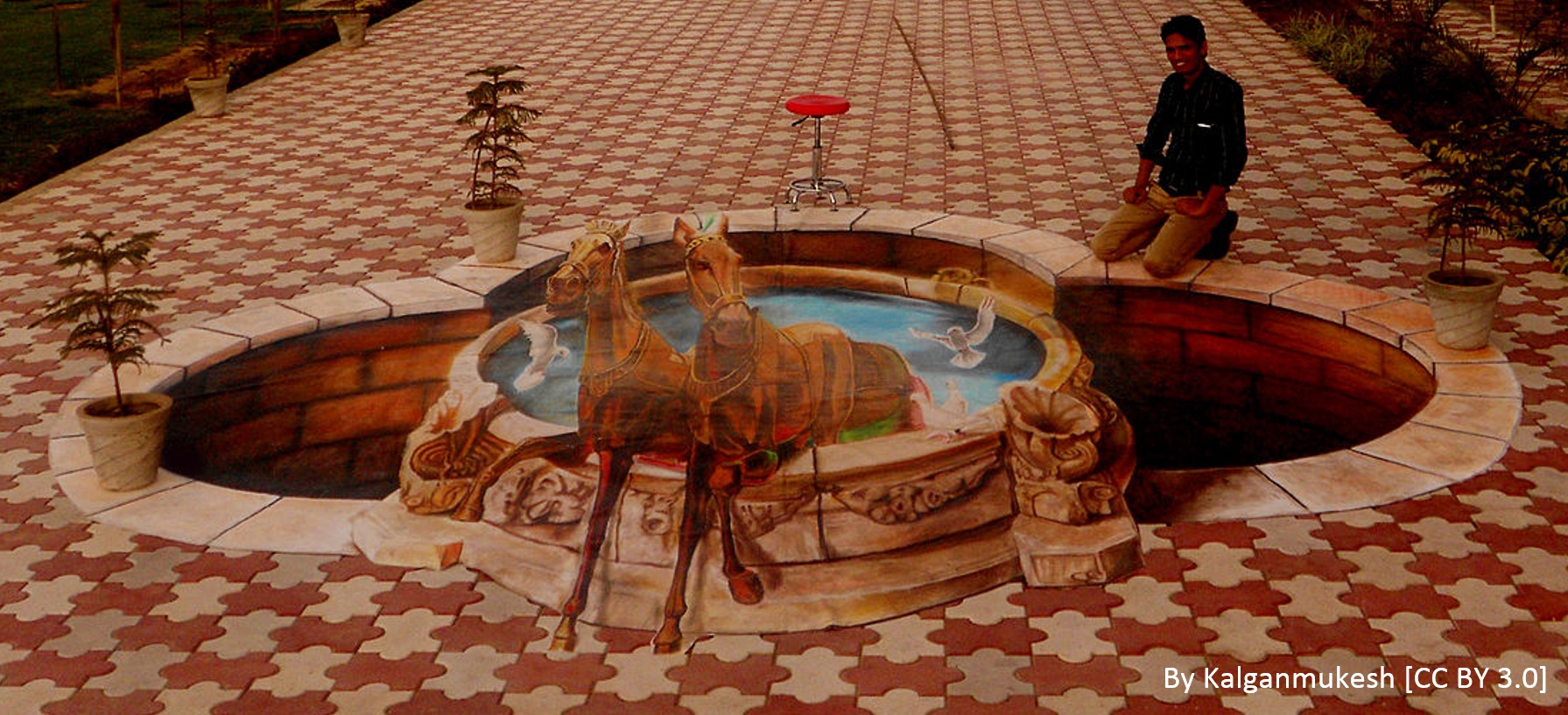Can you make sense of this picture? It is April Fool’s Day, but the above image is taken naturally, and has had no computer-generated alteration…
Three questions:
- What about the pool? It looks like this artist worked with a sculpted pool. Perhaps he created it, or perhaps he worked with something already there… Yet water surely isn’t naturally that blue, is it?
- The horses and doves: Those horses and doves look painted on the sides and top of the pool, but how would that explain the fact their heads are clearly coming out the top of the pool? Could painting alone explain this?
- The hole: Why would someone make a sculpture next to such a large hole? Surely it’s a health and safety risk having such a large pit where people are freely looking around?
What do you think? How was this work of art created? Tweet us your thoughts @GlobalIrishman, and we’ll include some of the most creative and inventive replies in a future post.
What is going on in this picture? (Not computer generated!)
Tweet us @GlobalIrishman with your thoughts! #AprilFools pic.twitter.com/sr5b6cnujZ
— Global Irishman (@GlobalIrishman) March 25, 2015
White and Gold, or Blue and Black?
It’s interesting how people see things differently. Mid-February this year saw a strange phenomenon of our contemporary world of Social Media. It centred around a picture taken from the Hebrides, off the coast of Scotland, of a certain white and gold dress. Or was it blue and black? The debate exploded within hours and became a worldwide sensation. It was all based around a simple visual illusion.
Just as people see colour differently, people see race differently and people see other people differently. To one person, an individual may be inexpressibly precious. Another may completely disown and dehumanise them. Sometimes one event, or one realisation, can move someone’s reputation from being a valued member of a family to worse than dead to them. This could be as simple as a diagnosis with a disease such as Leprosy.
Why do we base someone’s value on something that’s happened to them? What is it that makes one person worth kindness and love and another not even worth basic human dignity? We all tend to base a person’s value on some external fact. Someone who’s committed a crime of some sort is often considered to have ‘forfeited their human rights’ in the eyes of society. Someone from a different nationality is often considered to be worth less privileges than a citizen of our own country simply because of their birthplace. Someone with a debilitating condition or disease is arguably subconsciously labelled as ‘worth less to society’ than a so-called ‘healthy’ person.
Is this attitude justified?
The above picture may be perceived by people in different ways. Yet is doesn’t change the reality of what it is, an artist’s masterpiece. He smiles beside it with pride at what he created. It is a precious work of great time, effort and insight to him, and he would hate to see it damaged or destroyed. Why do we not consider people the same? Even with all our differences, we are all equally human, and worth far more than any piece of art. This is equally true for the billionaire, the humanitarian worker, the criminal, the immigrant and the person affected by a disease such as Leprosy.
As Mother Teresa once said, “If we have no peace, it is because we have forgotten that we belong to each other.”
